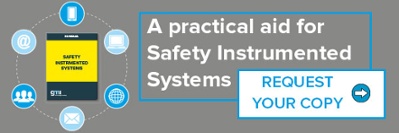The title of Project Functional Safety Manager indicates a safety-linked role requiring technical leadership skills. In particular, it requires people with top-level skills in functional safety management and in the automotive sector. Achieving functional safety and projects that meet adequate levels of SIL is no simple task. First of all, the technical and managerial tasks throughout the life cycle of the safety system need to be identified. Once they have all been identified, the organizations and roles responsible for these tasks have to be established. The role which stands out above all others is the Project Functional Safety Manager (PFSM) who is responsible for:
- managing the product life cycle with particular attention to functional safety;
- analyzing technical requirements and specific customer needs;
- applying methods to improve production processes and software development.
Just as each project has a project manager, every functional safety project should have its own independent functional safety manager. Any issue related to functional safety, such as a few functional tests for example, should take precedence over issues related to project management.
Functional safety management can be implemented either within a single project or as part of a company's overall operating procedures. In either case, end users (i.e. engineering companies, system integrators, product suppliers and any other body involved in one or more phases of the safety system life cycle) have to put functional safety management in practice and also document it in a specific plan. Product suppliers have to comply with the IEC 61508 standard as a basis for functional safety management. System integrators have to refer to specific standards such as IEC 61511 or IEC 62061. End users, or their technical partners, have to manage functional safety during risk analysis and operational phases.
In short, functional safety management ensures that the players involved each perform the right job, at the right time, using the right tools, and following the right procedures and guidelines.
The role of the functional safety manager in the automotive sector
One of the most sensitive sectors in terms of safety is the automotive sector, where the project functional safety manager is responsible for carrying out safety-related tasks on critical systems and products. These are set out in the requirements of the ISO 26262 standard, which is the answer to the increasing levels of complexity found in car electrical and electronic safety systems. The standard regulates the use and functional safety of electrical and electronic systems in motor vehicles as well as the tasks to be carried out by suppliers of generic products, such as hardware and software components or development tools used mainly in the automotive industry. Requirements related to functional safety are a challenge for manufacturers, who not only have to integrate them right from the earliest stages in the development process, but also have to ensure functional safety all the way from the design stage to the end of the operating cycle.
In this scenario, the project functional safety manager works in conjunction with the customer’s safety organizations and product development teams. The PFSM’s outputs include a definition of the product architecture, the safety plan, preliminary risk and safety analyses, as well as verification and validation tasks. Further tasks include drawing up project costs, technical responsibility for functional safety, the ability to adhere to guidelines and work instructions agreed with the customer.
It is also crucial that a Project Functional Safety Manager be able to convert software and process quality guidelines into practice, starting from the IATF 16949 standard and from models such as SPICE Automotive (compliant with ISO/IEC 15504) and CMMI (Capability Maturity Model Integration), up to an approach based on other tools indicated by the customer (e.g. on-site evaluation, supplier self-assessment, etc.).


